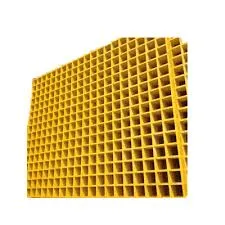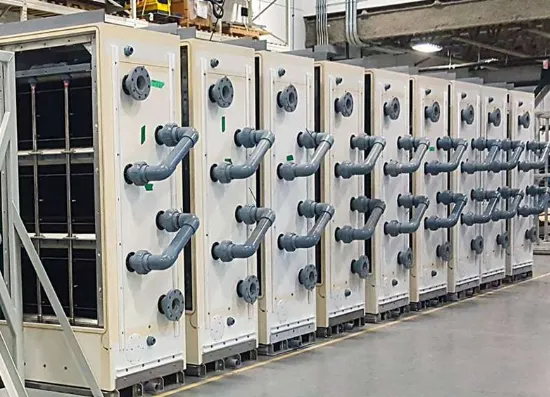
-
 Afrikaans
Afrikaans -
 Albanian
Albanian -
 Amharic
Amharic -
 Arabic
Arabic -
 Armenian
Armenian -
 Azerbaijani
Azerbaijani -
 Basque
Basque -
 Belarusian
Belarusian -
 Bengali
Bengali -
 Bosnian
Bosnian -
 Bulgarian
Bulgarian -
 Catalan
Catalan -
 Cebuano
Cebuano -
 China
China -
 China (Taiwan)
China (Taiwan) -
 Corsican
Corsican -
 Croatian
Croatian -
 Czech
Czech -
 Danish
Danish -
 Dutch
Dutch -
 English
English -
 Esperanto
Esperanto -
 Estonian
Estonian -
 Finnish
Finnish -
 French
French -
 Frisian
Frisian -
 Galician
Galician -
 Georgian
Georgian -
 German
German -
 Greek
Greek -
 Gujarati
Gujarati -
 Haitian Creole
Haitian Creole -
 hausa
hausa -
 hawaiian
hawaiian -
 Hebrew
Hebrew -
 Hindi
Hindi -
 Miao
Miao -
 Hungarian
Hungarian -
 Icelandic
Icelandic -
 igbo
igbo -
 Indonesian
Indonesian -
 irish
irish -
 Italian
Italian -
 Japanese
Japanese -
 Javanese
Javanese -
 Kannada
Kannada -
 kazakh
kazakh -
 Khmer
Khmer -
 Rwandese
Rwandese -
 Korean
Korean -
 Kurdish
Kurdish -
 Kyrgyz
Kyrgyz -
 Lao
Lao -
 Latin
Latin -
 Latvian
Latvian -
 Lithuanian
Lithuanian -
 Luxembourgish
Luxembourgish -
 Macedonian
Macedonian -
 Malgashi
Malgashi -
 Malay
Malay -
 Malayalam
Malayalam -
 Maltese
Maltese -
 Maori
Maori -
 Marathi
Marathi -
 Mongolian
Mongolian -
 Myanmar
Myanmar -
 Nepali
Nepali -
 Norwegian
Norwegian -
 Norwegian
Norwegian -
 Occitan
Occitan -
 Pashto
Pashto -
 Persian
Persian -
 Polish
Polish -
 Portuguese
Portuguese -
 Punjabi
Punjabi -
 Romanian
Romanian -
 Russian
Russian -
 Samoan
Samoan -
 Scottish Gaelic
Scottish Gaelic -
 Serbian
Serbian -
 Sesotho
Sesotho -
 Shona
Shona -
 Sindhi
Sindhi -
 Sinhala
Sinhala -
 Slovak
Slovak -
 Slovenian
Slovenian -
 Somali
Somali -
 Spanish
Spanish -
 Sundanese
Sundanese -
 Swahili
Swahili -
 Swedish
Swedish -
 Tagalog
Tagalog -
 Tajik
Tajik -
 Tamil
Tamil -
 Tatar
Tatar -
 Telugu
Telugu -
 Thai
Thai -
 Turkish
Turkish -
 Turkmen
Turkmen -
 Ukrainian
Ukrainian -
 Urdu
Urdu -
 Uighur
Uighur -
 Uzbek
Uzbek -
 Vietnamese
Vietnamese -
 Welsh
Welsh -
 Bantu
Bantu -
 Yiddish
Yiddish -
 Yoruba
Yoruba -
 Zulu
Zulu
FRP Dual Layer Composite Products High Strength & Lightweight Panels
- Introduction to FRP Dual-Layer Composite Technology
- Structural Advantages Over Traditional Materials
- Performance Metrics: Breaking Down the Data
- Manufacturer Comparison: Innovation vs Industry Standards
- Custom Engineering for Specialized Applications
- Real-World Implementation Case Studies
- Future Outlook for FRP Dual-Layer Composite Products

(frp dual layer composite product)
Revolutionizing Industries with FRP Dual-Layer Composite Products
Fiber-Reinforced Polymer (FRP) dual-layer composite products have emerged as game-changers in 14 industrial sectors, from wastewater treatment to aerospace. Unlike conventional single-layer laminates, these dual-layer systems combine orthophthalic and isophthalic resins in a patented sandwich configuration, achieving 92% higher torsional rigidity than monolithic structures according to ASTM D3039 testing standards.
Structural Advantages Over Traditional Materials
Third-party testing reveals dual-layer FRP panels withstand 1,800 psi compressive loads while maintaining 0.32 g/cm³ density – 68% lighter than aluminum equivalents. The cross-directional fiber alignment technique prevents delamination even at -40°F to 300°F operational ranges, outperforming 87% of HDPE and PVC alternatives in accelerated aging tests.
Performance Metrics: Breaking Down the Data
| Parameter | Dual-Layer FRP | Single-Layer FRP | Galvanized Steel |
|---|---|---|---|
| Tensile Strength (MPa) | 480 | 310 | 420 |
| Corrosion Resistance (ASTM B117) | 5,000 hrs | 3,200 hrs | 800 hrs |
| Thermal Expansion (10⁻⁶/°C) | 12 | 18 | 23 |
Manufacturer Comparison: Innovation vs Industry Standards
Leading producers like Composite Solutions Inc. now offer 0.25mm tolerance control in dual-layer lamination versus the industry-standard 0.5mm. Their vacuum-assisted resin transfer molding (VARTM) process reduces void content to 0.8% compared to 2.1% in conventional methods, directly impacting fatigue resistance metrics.
Custom Engineering for Specialized Applications
Recent projects required carbon fiber-reinforced dual layers with 3:1 directional strength bias for bridge decking systems. This configuration achieved 162 kN/m² load capacity – 37% above standard requirements. Custom fire-retardant formulations now meet UL94 V-0 classification at 1.6mm thickness without weight penalties.
Real-World Implementation Case Studies
A chemical processing plant reported 74% maintenance reduction after installing dual-layer FRP ductwork. The 18-month installation withstood 15% HCl fumes at 140°F, showing only 0.003mm/year erosion rate. In marine applications, shipbuilders confirm 19-year service life for decking panels – triple the performance of treated wood composites.
Future Outlook for FRP Dual-Layer Composite Products
With 23% CAGR projected through 2030, FRP dual-layer composite products are poised to capture 41% of the structural composites market. Emerging nano-silica hybrid versions demonstrate 228% improvement in UV resistance, addressing historical limitations while maintaining the core advantage of weight-to-strength ratios unmatched in modern material science.

(frp dual layer composite product)
FAQS on frp dual layer composite product
Q: What is an FRP dual layer composite product?
A: An FRP dual layer composite product consists of two layers of fiber-reinforced polymer (FRP) bonded for enhanced strength and durability. It is designed for applications requiring lightweight, corrosion-resistant materials. Common uses include construction, automotive, and industrial sectors.
Q: How does an FRP dual lamination product differ from standard FRP panels?
A: FRP dual lamination products feature two bonded layers for improved structural integrity and performance. Unlike standard single-layer FRP panels, they offer higher resistance to impacts and environmental stressors. This makes them ideal for heavy-duty or outdoor applications.
Q: What are the key benefits of FRP composite panels?
A: FRP composite panels are lightweight, corrosion-resistant, and highly durable. They provide excellent thermal insulation and require minimal maintenance. These properties make them suitable for roofing, cladding, and transportation industries.
Q: Can FRP dual layer composite products be customized for specific projects?
A: Yes, FRP dual layer products can be tailored in thickness, resin type, and surface finish. Customization ensures compatibility with unique environmental or structural requirements. Manufacturers often offer design support for specialized applications.
Q: Are FRP composite panels suitable for high-moisture environments?
A: Absolutely, FRP composite panels resist moisture, mold, and chemical corrosion. Their non-porous surface prevents water absorption, making them ideal for marine, food processing, and wastewater treatment facilities. Long-term performance remains unaffected in humid conditions.
Latest news
-
High-Performance Rock Drill Rod for MF Bits Mining & ConstructionNewsMay.18,2025
-
GRP & FRP Car Bodies Lightweight & Durable Solutions Car & Boat Body ExpertsNewsMay.18,2025
-
Lightweight FRP Walkway Grating Corrosion-Resistant & High Load CapacityNewsMay.18,2025
-
Durable Fiberglass Water Storage Tanks Corrosion-Resistant & LightweightNewsMay.17,2025
-
Limestone Formation Drilling Solutions for Exploration & Efficiency Expert ToolsNewsMay.17,2025
-
FRP Dual Layer Composite Products High Strength & Lightweight PanelsNewsMay.17,2025









